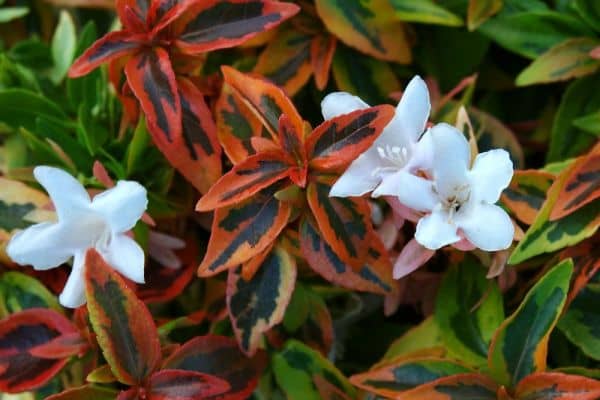Kaleidoscope Abelia is semi-evergreen and blooms in different colors, such as greenish-yellow in the spring, gold in the summer, and beautiful burnt reds in the fall. It is one of the best plants for your garden as it is also a low-maintenance plant.
So in this section, we will be learning tips on how to care for and grow Kaleidoscope Abelia in your garden:
Kaleidoscope Abelia Growth
You can start growing Kaleidoscope Abelia during the spring or fall and if you plant Kaleidoscope Abelia during the warmer climate they can well establish their roots before the next summer.
To grow Kaleidoscope Abelia you will need a place that has full sun to partial shade and well-draining soil. You can mix the organic matter in the soil while loosening the soil. Also, remember to dig the hole twice as wide and as deep as the root ball and place the plant in the center at the top level with the soil surface.
Then you can backfill the hole with plants and soil while gently tamping the soil down. Remember to water the plant thoroughly and maintain consistent moisture for the first few weeks after planting to help the roots establish.
You can also apply a two to three-inch layer of mulch around the base which can help to keep the soil moist for a longer period of time. Remember to keep the mulch a few inches away from the stem as it can cause the plant to die if kept too close.
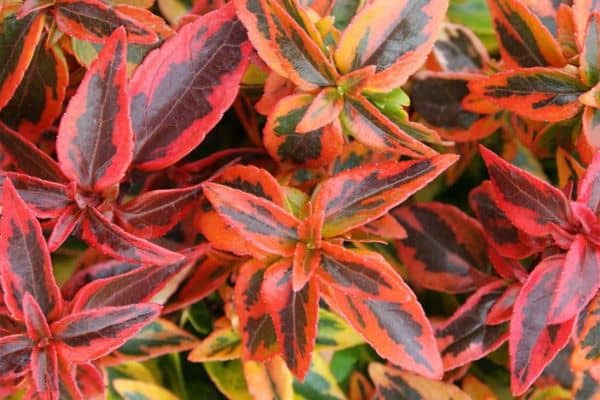
Kaleidoscope Abelia Care
Most gardeners find to their delight that kaleidoscope abelia will grow itself. Simply plant, add some mulch, and grow! But for spectacular leaf and flower displays, follow the tips below.
1. Light
As for light, the Kaleidoscope Abelia plant prefers full sun or partial shade to grow properly. But if they have full sun the flower blooming is much more abundant than in partial shade. You can choose a place in which your Kaleidoscope Abelia plant can get six hours or more than six hours of direct sunlight so they can have a strong flowering season. Four hours of sunlight will also work but they won’t be as strong as six hours during flowering season.
2. Soil
As for soil, the Kaleidoscope Abelia plant prefers moist soil but avoids having it too moist. They also need well-draining soil as they can’t grow properly in standing water. You can also mix the organic matter in the soil while loosening the soil and Kaleidoscope abelia likes a slightly acidic soil pH. Also, remember to not plant or use lime or other acid neutralizers near the Kaleidoscope Abelia plant soil.
3. Water
As for water, the Kaleidoscope Abelia plant needs at least an inch of water per week and more than an inch of water per week in hotter seasons. You should also remember to check the soil moisture by using a hand trowel and sticking it about three inches into the soil if the tip is damp you can water it later and if it comes dried you can water it.
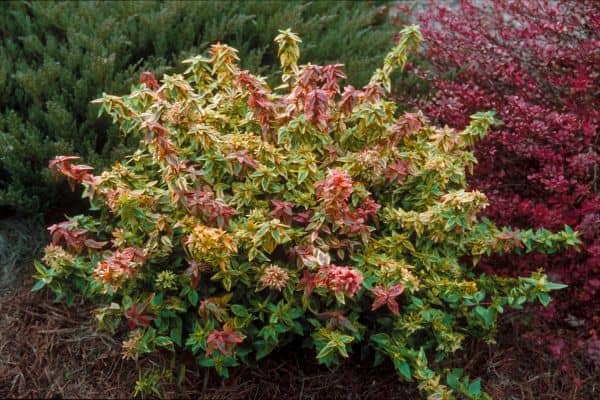
4. Temperature & Humidity
As for temperature and humidity, the Kaleidoscope Abelia plant gets a somewhat evergreen tendency through warmer climates and turns to a beautiful lime green in the spring and yellow in the summer. At the same time, autumn brings red-orange leaves with lovely dark centers.
5. Fertilizing
As for fertilization, the Kaleidoscope Abelia plant needs slow-release, granular fertilizer which should be optimized for use on acid-loving plants. You can feed the Kaleidoscope Abelia plant in the early spring before new growth starts to appear and don’t forget to apply as per the manufacturer’s directions.
You can also do a light or second-to-feed the Kaleidoscope Abelia plant in the summer when flower buds begin to appear second or light feeding is not as important as early spring feeding but it can help the Kaleidoscope Abelia plant spark more budding.
The Kaleidoscope Abelia plant can also be fed using the slow-release nitrogen in late summer which will help to the next spring’s growth. You can use both high nitrogen with acidic fertilizers for spring feeding as nitrogen also boosts and stimulates new growth.
6. Maintenance
As for propagation, the Kaleidoscope Abelia plant should be pruned lightly during the growing season. It only requires from spring until fall to maintain its shape and during the winter season, you can prune up to one-third of the Kaleidoscope Abelia plant height which helps them to encourage new spring growth.
You also should remember not to prune more than a third of the plant back as the turning is done only to activate growth again. You can also leave the older wood in the same place to grow on its own as the Kaleidoscope Abelia plant’s dead branches can be pruned back to the plant’s base.
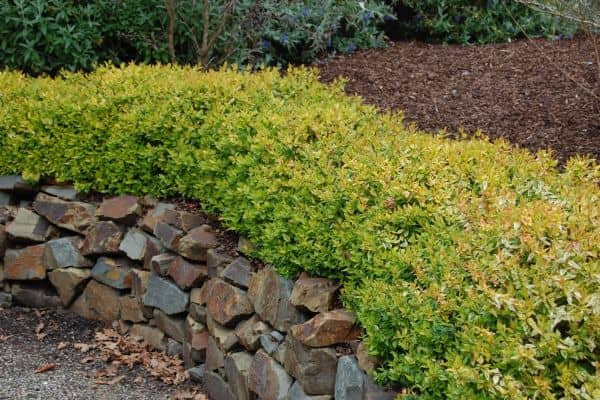
7. Propagation
As for propagation, the Kaleidoscope Abelia plant can be talked at different times of the year which are also known as softwood, summer, or hardwood cuttings.
Softwood cutting is a method in which the cuttings should be taken from the first new shoots in the spring.
Summer cutting is a method by which semi-ripe cuttings are taken when the plant is in the bud.
Hardwood cutting is a method in which cuttings from hardwood at least one year old.
8. Common Problems
As for common problems, the Kaleidoscope Abelia plant has a lot fewer problems than other shrub. As a Kaleidoscope Abelia is also known to be a low-maintenance and ease-of-care plant.
9. Bending Stems
As for bending steam, the Kaleidoscope Abelia plant steams bends as it is a quick-growing plant, and its stems can be weaker and prone to flopping over. All you have to do is light tip-trimming to stop them from having a bending stram.
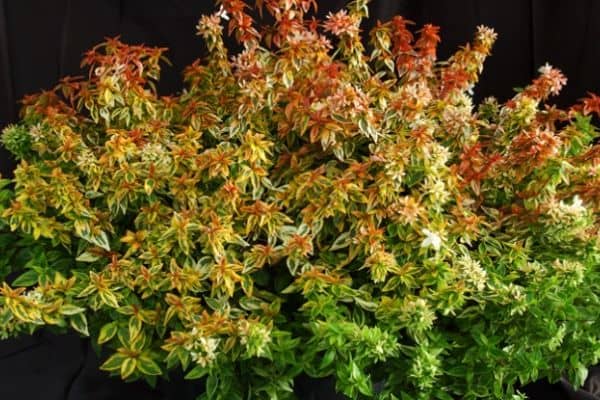
10. Pests
As for pests, the Kaleidoscope Abelia plant is known for pests leaving abelias alone. Kaleidoscope Abelia is also known for being a deer and other grazers-resistant but you may find some leaf spotting but it won’t affect the growth and health of your plant. If the leaf spot has even slight damage on the plant you can use neem oil or an insecticidal soap to reduce their numbers.
11. Diseases
As for diseases, the Kaleidoscope Abelia plant diseases aren’t common and won’t get any major plant diseases. Sometimes some minor leaf spotting is at worst but it won’t affect the growth and health of your plant.
FAQs
Q. Is kaleidoscope abelia evergreen?
Kaleidoscope Abelia is not an evergreen plant but it is considered semi-evergreen and blooms different colored flowers in different seasons like greenish-yellow in the spring, gold in the summer, and beautiful burnt reds in the fall.
Q. How big is Kaleidoscope Abelia?
Kaleidoscope Abelia can grow up to 2 to 2.5 feet tall and 3 to 4 feet wide.
Q. Where is the best place to plant Abelia?
Well-drained, fertile soil with slightly acidic to neutral pH levels and full sun and partial shade is the best place to plant Abelia.
